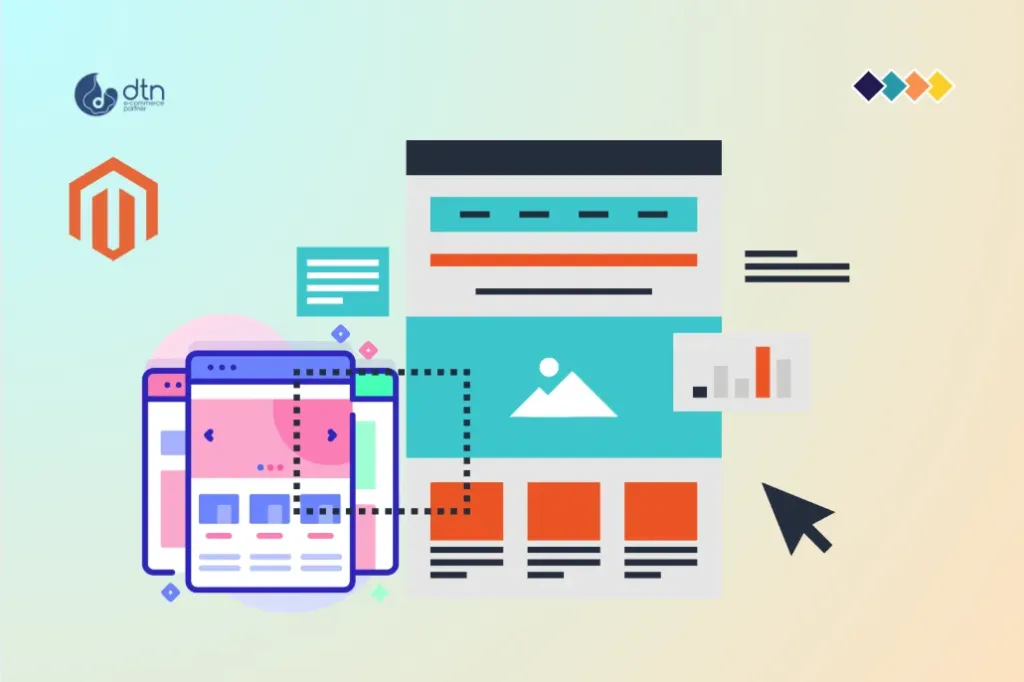Imagine launching an online shop that’s fast, user-friendly, and built to grow with your business. That’s what Magento, a leading e-commerce platform, can deliver when set up right. It’s not just about adding products—it’s about creating a seamless experience that draws customers in and keeps them coming back. With global e-commerce booming (Statista.com, 2025), a well-crafted Magento store can help you stand out in a crowded market.
This guide walks you through setting up a Magento store, from planning to launch, with practical tips and real-world examples. Whether you’re a small business owner starting or a marketing manager scaling up, these steps will help you build a shop that shines. Let’s get started. For e-commerce basics, check our guide to beginner platforms.
Why Choose Magento for Your Online Shop
Magento, part of Adobe Commerce, powers thousands of stores worldwide with its flexibility and scalability (Shopify.com, 2024). It’s perfect for businesses selling anything from fashion to tech, offering customisable features that can boost sales when done well. Unlike simpler platforms, Magento handles complex needs—like multi-currency or extensive catalogues—making it ideal for growth.
But it requires effort. A proper setup ensures fast load times, secure payments, and happy customers. Miss a step, and you risk a clunky site that drives shoppers away. Let’s break down how to get it right.
Step 1: Plan Like a Pro
A great Magento store starts with a solid plan. Skimp here, and you’ll face issues later. Focus on these:
- Know Your Business: Define your niche and audience. Selling eco-friendly gifts to UK shoppers? Your store’s features should reflect its values.
- Plan Your Products: Decide what you’ll sell, how you’ll price, and how you’ll manage stock. Think about shipping—can your logistics handle growth?
- Pick a Domain and Hosting: Choose a catchy, brand-aligned domain. Magento requires robust hosting (e.g., 8GB RAM, SSD storage) to prevent slow load times, which can negatively impact sales (Worldpay.com, 2024).
- Select a Theme: Choose a responsive, SEO-friendly theme that aligns with your brand. Free themes work for startups; premium ones offer more flair.
- Choose Extensions: Enhance your site with extensions for payments (e.g., PayPal), shipping (e.g., Royal Mail), or SEO. Check compatibility to avoid glitches.
A UK tea retailer planned their Magento store around local tastes, using a clean theme and Royal Mail integration to streamline their launch.

Step 2: Install and Set Up Magento
With your plan ready, it’s time to install and configure Magento:
- Installation Options:
- Magento Installer: Simple for beginners, guiding you through setup with database details.
- Composer: Developer-friendly for managing dependencies.
- Cloud Hosting: AWS or Adobe’s cloud options simplify setup and upkeep.
- Key Configurations:
- Database: Set up a MySQL database for product and customer data.
- Store Settings: Choose GBP, language, and time zone. Configure VAT or other taxes—consult a professional if unsure.
- Payments: Integrate trusted gateways like Stripe or PayPal—test API keys to ensure smooth checkouts.
- Shipping: Set up carriers (e.g., DHL) and rates for accurate delivery costs.
- Security: Use SSL and two-factor authentication to keep data safe.
A small bookshop nailed their Stripe integration, reducing checkout errors and building customer trust.

Step 3: Craft a Stellar Product Catalogue
Your products are your store’s heart. Magento’s tools make this easy, but details matter:
- Add Attributes: Use size, colour, or material to make products searchable and filterable.
- Organise Categories: Create clear categories (e.g., “Books > Fiction”) for easy browsing.
- Track Stock: Enable real-time inventory to avoid overselling—tools like TradeGecko help for larger setups.
- Optimise Listings: Use high-quality images and engaging descriptions. Add keywords like “handmade jewellery” for SEO.
- Boost Speed: Compress images to keep load times quick—slow sites lose customers (Worldpay.com, 2024).
A craft store added “organic” filters to its catalogue, making it easier for eco-conscious shoppers to find products, which boosted sales.

Step 4: Test Before You Launch
Testing ensures your store is ready for customers. Cover these:
- Functionality: Check checkout, payments, and shipping options.
- Performance: Use Google PageSpeed Insights to aim for load times under 2 seconds.
- Security: Apply Magento’s latest patches to protect against vulnerabilities.
- Mobile Experience: Given that most traffic is on mobile (Shopify.com, 2024), test across devices.
A pet shop caught a payment glitch during testing, fixing it before launch to save sales.

Practical Tips for Magento Mastery
- Start Simple: Launch with a core product range and scale up.
- Use AI: AI analytics can spot trends, like popular products, to optimise stock (Stripe.com, 2024).
- Keep It Fast: Optimise caching and hosting for speed.
- Get Help: If tech feels tricky, hire Magento experts for setup or support.
For global sales, pair your store with our multi-currency payments guide.
Wrapping Up: Build a Magento Shop That Sells
A Magento store is your chance to create a fast, customer-friendly shop ready for 2025’s booming e-commerce market (Statista.com, 2025). With careful planning, smart setup, and ongoing tweaks, you’ll attract and keep shoppers. From seamless checkouts to optimised catalogues, every detail counts.
Ready to launch? Plan carefully, test thoroughly, and promote with flair. Contact our e-commerce experts for tailored advice to make your Magento shop a hit. Your dream store is within reach.
Q&A: Your Magento Setup Questions Answered
Why use Magento for an e-commerce shop?
Magento’s flexibility and scalability make it ideal for custom, growing stores (Shopify.com, 2024).
How do I start setting up a Magento shop?
Plan your business, choose robust hosting, pick a responsive theme, and install Magento via the installer or cloud. Then configure payments, shipping, and taxes.
What challenges should I expect with Magento?
High hosting costs, complex setups, and maintenance can be hurdles. Managed hosting and experts can help.
How do I optimise my Magento product catalogue?
Add attributes, organise categories, use quality images, and include SEO keywords (Worldpay.com, 2024).
What should I test before launching?
Test checkout, payments, speed, security, and mobile responsiveness (Shopify.com, 2024).
References
- Statista.com, 2025: https://www.statista.com/outlook/emo/ecommerce/worldwide
- Shopify.com, 2024: https://www.shopify.com/enterprise/blog/global-ecommerce-statistics
- Checkout.com, 2024: https://www.checkout.com/resources/payment-security
- Worldpay.com, 2024: https://www.worldpay.com/en/insights-hub/article/global-payments-report
- Stripe.com, 2024: https://stripe.com/resources/more/global-payments



